
“Woman with absinthe glass, Moulin Rouge” by Jeanne Mammen (early 1900s).
“I have always wanted to be just a pair of eyes, walking through the world unseen, only to see others.”
—a quote from artist Jeanne Mammen from the only interview she would ever do during her career, with art historian Hans Kinkel, 1975.
Described as “artistically gifted” at a very early age, Jeanne Mammen’s family would move from her birthplace of Berlin to Paris when she was five. She immersed herself in French literature—especially that of the great Romantic novelist Victor Hugo and the poet Charles Baudelaire. In 1907, at the age of seventeen, Mammen and her sister Adeline attended Académie Julian. The Académie Julian was an artistic refuge, especially for women who were allowed to enroll and where they had access to nude male models as subject matter. This is important as other art-centric schools had been slow to admit women into their institutions. If they did, women were not allowed to participate in painting or life study classes with their male counterparts.
Jeanne and Adeline would move on to Brussels to continue their studies. Then to Rome, where they attended both the Accademia di Belle Arti di Roma and the Scuola Libera del Nudo dell’Accademia di Belle Arti di Roma (aka “The Scuola Libera del Nudo,” or “free school of the nude,” for the teaching of life-drawing). The sisters would return to Paris in 1912 only to be forced to flee the city with their family. Unfortunately, their successful merchant father, Gustav Oskar Mammen, was labeled a “foreign enemy” and all of the family’s possessions, including their home, were confiscated. By 1916, the Mammen family was impecunious and living in Berlin doing any kind of work they could collectively find to keep financially afloat. After some time, Jeanne and her sister were able to afford to rent a studio apartment. The small apartment would eventually become a place Jeanne seldom left and where she would bring her observations of Berlin to life. Her work was widely published in magazines, as well as her writing. She was finally, once again, financially secure. But as 1933 and WWII loomed, Mammen would once again find herself out of work, but that didn’t mean she stopped working. Here is another quote attributed to Mammen’s lone interview on how she managed to keep creating despite the Nazis’ best efforts to stop her and other artists whom they categorized as “degenerates”:
“With the advent of the Hitler era, a ban on, or ‘Gleichschaltung’ of, all the magazines I was working for. The end of my ‘realistic’ period. Transition to an aggressive painting style, of fragmenting the object (in contrast to the official art world). World War II: no oil paints, no canvas—all pictures from this period are painted with gouache on cardboard. Ration cards, unemployment registration, hard labor, bombing, forced training as a fireman.”
Influenced by artists such as Henri Toulouse-Lautrec and Edgar Degas, Mammen seemed to embrace Figuratism as early as 1908, painting in this style for approximately six years before her work became more aligned with Symbolism. A wildly prolific artist who worked in various mediums, including watercolor, Mammen’s muses included members of Berlin’s queer community, a plethora of women, and vivid interjections of religious imagery and symbolism. Following the conclusion of WWII, Mammen would allegedly tell her longtime friend, Nobel Prize-winning biophysicist Max Delbrück, that “the ruins of Jeanne can be found in the ruins of Berlin.” After seven decades of creating artwork that still refuses to be defined by a singular artistic description, Mammen would pass away in Berlin at the age of 86. Mammen’s long career and artwork have been the subject of a couple of books including Jeanne Mammen: Paris – Bruxelles – Berlin (2017), Jeanne Mammen The Observer: Retrospective, 1910–1975 (2018). Her work is also featured in Splendor and Misery in the Weimar Republic: From Otto Dix to Jeanne Mammen (2018).
Images spanning Mammen’s impressive career follow.
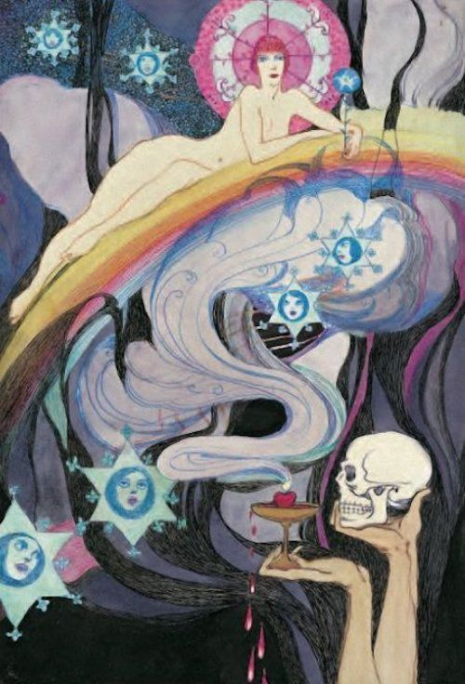
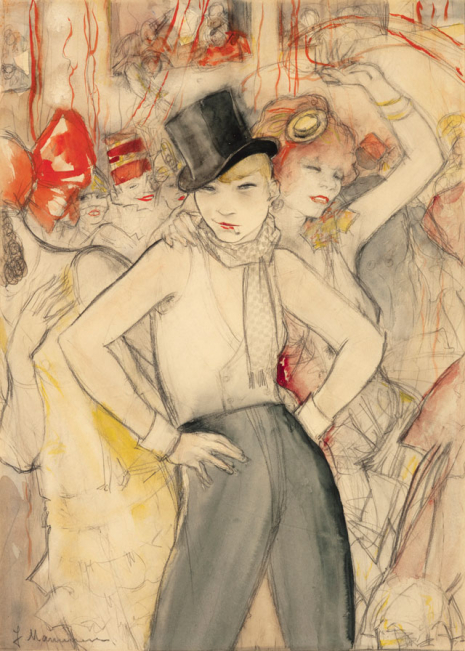
“She Represents” (1928).
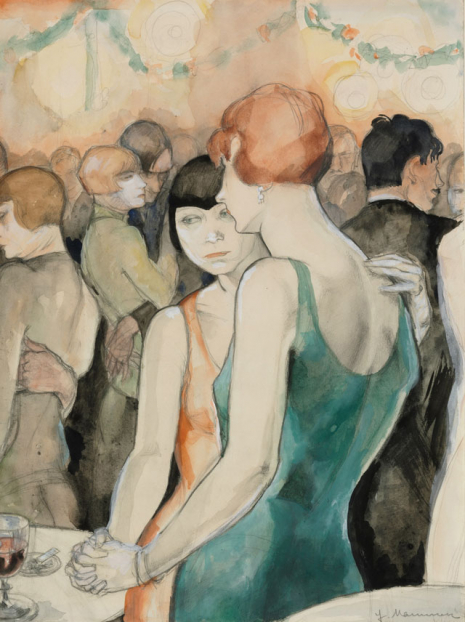
“Two Women Dancing” (1928).
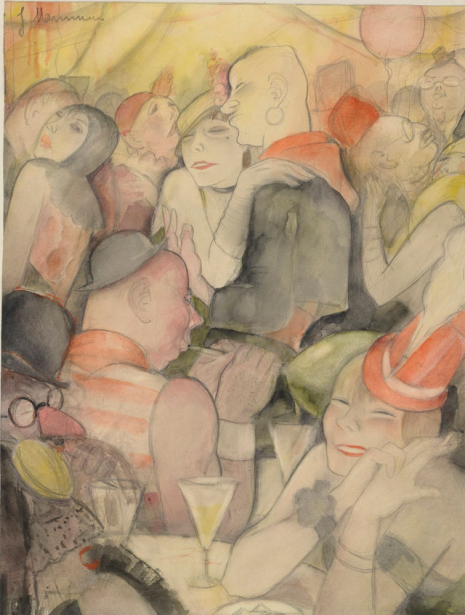
“Carnival in Berlin” (1930).
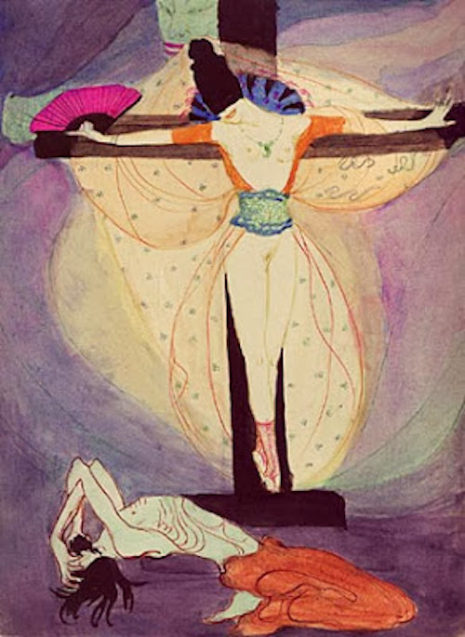
“Woman at the Cross” (1908).

“Streets in Weimar Berlin, Boot-Whores.” According to author Curt Moreck, there is a tourist site located near the Passauer and Ansbacher streetcorners, west of Wittenberg Platz. There, it was customary to see a trio of six-foot tall Boot-Girls garishly costumed in red and black attire like nineteenth-century horsewomen. Snapping a riding crop, they would ask ‘Who will be my slave tonight?’”

“At the lesbian club Monbijou” (1925).

“The Child Murderer” (date unknown but likely early 1900s)

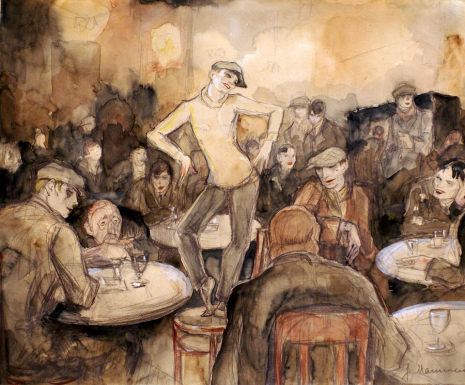
“Transvestite Hall” (1931).

“Saint Anthony and the Queen of Sheba.”

An illustration by Mammen for the magazine ‘Metropolis Berlin.’
_(1930_465_643_int.jpg)
“Brüderstrasse (Free Room),” 1930.

“The Beach at Ostende” (1926).
Previously on Dangerous Minds:
Yves Tanguy: The master Surrealist who ate spiders and created smutty sketches just for fun
The fractured fairy tales of photographer Miwa Yanagi
Fish heads & the feminine form: The dazzling candy-colored art of Hannah Yata
The boys of Paris: The trailblazing transgender performers of Madame Arthur’s
Prostitutes, mannequins and street traders: The flâneur who photographed Paris, 1890s-1920s